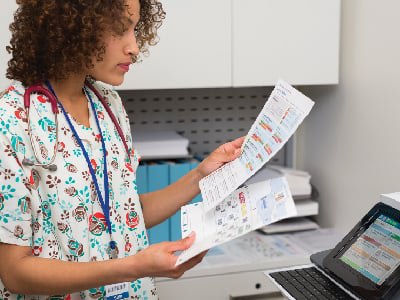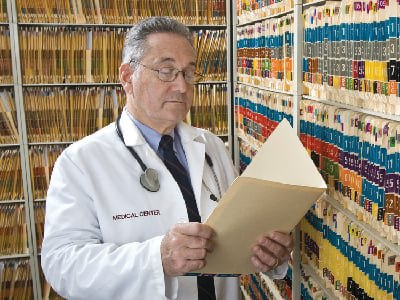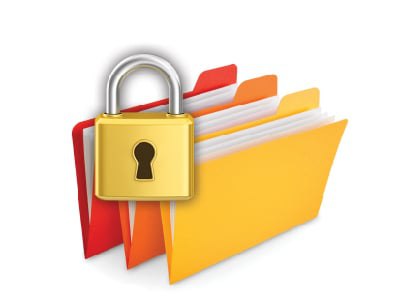Healthcare: The Top 3 Reasons It’s Time To Stop Faxing
Healthcare | Office Copiers, Printers, and MFPs | Print
Using a fax machine to send and retrieve patient records has been the tried and true process in healthcare for several years. So what’s the point of changing it now?
Well, the truth is, it’s just not practical, safe, or convenient. With how advanced technology has become, you’d think that the entire healthcare industry would immediately adapt to these technologies and enhance its operations.
Yet, that isn’t the case. The switch from a faxing environment to a cloud-based environment has been a slow uphill battle.
By healthcare teams and providers continuing to fax to deliver confidential health-related files to another team or provider, they are putting their patients at risk and risking causing medical errors down the line.
As a privately-owned independent copier dealer, LDI has seen how a bad filing and faxing system can affect a healthcare provider’s operations and put patients at risk.
We understand how scary it can be to switch to a new way of doing things, especially when you’ve been following the same faxing system for years. That’s why we’ve gone ahead and solidified a few reasons for why it may be time to consider a new approach.
This article will cover the four reasons why faxing is a problem in healthcare. It will also detail a few solutions to incorporate to try a different approach moving forward.
By the end of this article, you will better understand the trouble with faxing in the healthcare space and feel educated to decide whether faxing is still right for you.
What Are 3 Reasons Why Faxing Is Problematic In Healthcare?
We get it. Disrupting a workflow that’s become routine may be tedious.
But the question is, are you not upgrading your technology because it’s annoying or because you’re unaware of how problematic faxing can be?
Here are three detailed reasons your healthcare team should reconsider faxing to send, receive, or share patient records.
1. It Wastes Time
Faxing may have initially been referred to as a “time saver” in the past, but it isn’t anymore.

Let’s discuss the method of faxing, shall we?
Faxing involves placing a document you want to send in the document feeder of your print device, entering the fax number you want to send it to, and then pressing send or go depending on your device.
While the process of faxing a document may seem quick, the backend process is not. Once the document lands in the healthcare providers’ hands, it is sent to that file that needs to be categorized and filed away.
If you’re relying on filing your patients’ information by retrieving files through a fax machine, consider how immediate you’d need to retrieve that document so that it can be stored away properly and not get in the hands of an unauthorized employee.
It’s risky. In addition, if the papers are immediately looked after, they are put in a pile with a stack of other patients’ files. Not only can files get lost, but they can also be misplaced, leading to severe medical errors in the future.
2. Non-Effective Communication Between Providers
Faxing does not lend itself well to interoperability and proper communication between healthcare providers.
 According to ReferralMD, approximately one-quarter of U.S. patients report that the results and records from one provider did not reach another provider in time for their appointment.
According to ReferralMD, approximately one-quarter of U.S. patients report that the results and records from one provider did not reach another provider in time for their appointment.
There is a lack of effective communication between providers, leading to improper care down the line.
Patients should not have to reiterate their medical history several times before receiving quality care.
Not only does this slow down the process, but it can cause significant bumps in the road, such as a provider not having a streamlined way of receiving vital information about a patient before an urgent appointment.
3. Compromises Patient Security
It’s easy for faxed documents to get lost.
A fax number can be incorrectly dialed, leading for a file to get sent to the wrong place. The document can also get misplaced once it makes it to the desired location. Either way, your patient’s information is at risk of being compromised.

Additionally, if fax goes to the wrong place, it’s a HIPAA violation.
Not only can faxing go against compliance regulations, but it can result in the loss of a patient’s trust or even a massive fine.
For example, hospitals and global public health organizations have collected and exchanged COVID-19 data to help combat the pandemic. We’d be in big trouble if the entire industry only relied on fax machines to relay this especially critical information.
To prevent foolish mistakes and messy backend filing, consider trying a different approach than using a fax machine.
Is There An Alternative Method To Faxing?
You may be asking, “so, what now?” Well, seeing as we just covered the top four reasons why faxing is problematic in the healthcare system. It’s only fitting that we discuss a solution.
The immediate solution is changing the way you send and retrieve information. But how?
It’s simple, really, by migrating to the cloud adopting a cloud-based interoperable approach. Let’s dive a bit deeper.
Cloud interoperability is the process in which different information systems, devices, and application systems can all access, share, integrate, and utilize data in a concise coordinated way via the cloud.
It can streamline the way you file documents, improve the workflow of sending and receiving files, enhance the security of your patient’s records, and implore interoperability that lends itself well to seamless communication.
Interoperability offers healthcare providers the choice to use data within and across organizational, regional, and even national boundaries. Why?
To provide timely and seamless access to patients’ records.
Here are a few cloud-based interoperable solutions to consider:
Using Cloud-Based Electronic Health Records (EHRs):
Think of an electronic health record (EHR) system as a digital version of a patient’s paper chart.
An EHR system is built to contain a patient’s medical history, diagnoses, medications, treatments, allergies, and more. It also allows access to evidence-based tools that healthcare providers can utilize to make critical patient care decisions.
While there are many EHR options out there, we recommend asking clarifying questions to ensure it focuses on your particular needs.
Implementing Print Devices With Interoperable Software:
A great example would be the Kno2 Connected™ Xerox® Healthcare Multifunction Printer (MFP).
This solution is an innovative printing device engineered explicitly for healthcare printing.
In addition to it being an MFP, the Xerox® Share Patient Information Application and Kno2 connection provide a streamlined way to share and store patient information digitally securely.
Interoperable solutions improve the portability of data and can, in turn, enhance the care of patients globally.
Interoperable solutions to allow different systems to “talk,” “share,” and “understand one another. This ensures that data is effectively stored and used constructively as part of the patient’s care plan.
Ready To Ditch Faxing & Try A Different Approach?
Trying a new approach to sending and retrieving vital health records may seem daunting.
We get it. Trying something new is scary, especially when you have your patients’ trust to keep in mind.
But if any of the outlined reasons above resonated with your current process, it may be time to try a different approach.
At LDI, we have worked with several clients in education, law, nonprofits, and healthcare. We know that not one solution fits all. That’s why we take time to understand what office technology needs and solutions best align with your day-to-day operations.
As a solution, LDI provides the Xerox Healthcare MFP solution. This features the Xerox Share Patient Information application and Kno2 connection. This solution can help healthcare practices securely share medical records without needing to worry about security risks or HIPAA compliance issues.
Learn more about this MFP that can help streamline your data sharing process by speaking with an LDI representative today.